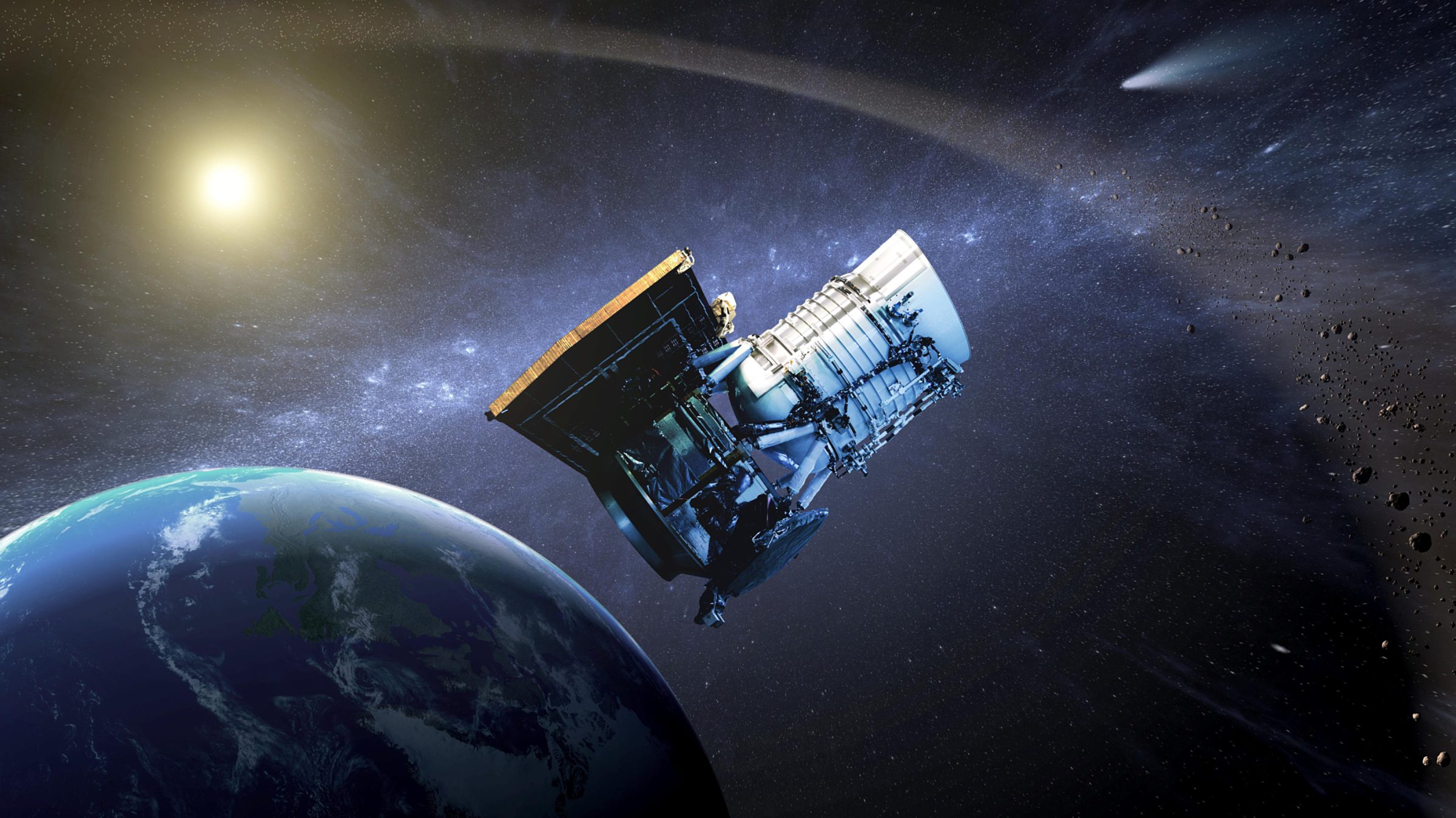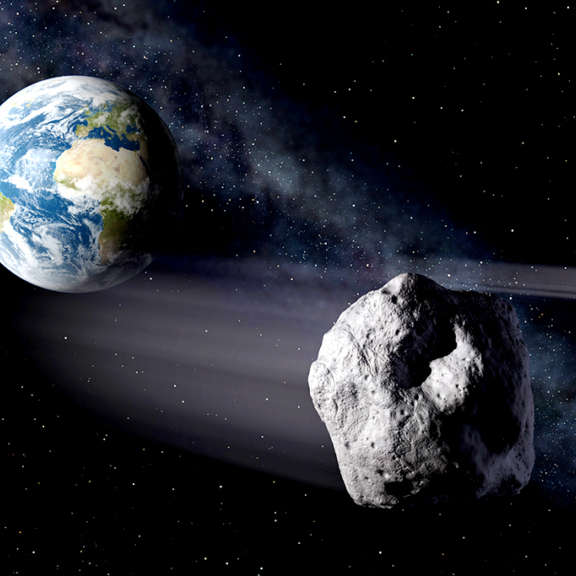Defending the Earth from Impacts
Asteroids and comets that come close to Earth can pose a very real threat to our planet, but impacts from these objects aren’t inevitable. With proper planning we can prevent this natural disaster from happening.
What is the threat?
There are billions of comets and asteroids in our solar system. The vast majority never approach Earth. When a comet or asteroid’s orbit brings it close to Earth, it is classified as a near-Earth object, or NEO.
Early Earth was bombarded by comets and asteroids, some of which may have carried water and carbon-rich materials here that helped kickstart life.
Today, impacts still happen all the time but most are barely noticeable. Earth’s atmosphere burns up most of the objects that collide with the planet. Impactors large enough to reach the ground are rare, but this does happen. And although infrequent, major impacts are possible and can create more damage than an atomic bomb. A big enough impact could wipe out entire cities or even cause global devastation.
Notable Asteroid Impacts in Earth’s History
Some of the most significant impacts that humans (and dinosaurs) have witnessed.
What is planetary defense?
Although devastating impacts are very rare, they are also a cosmic inevitability if we don’t take steps to prevent them. Planetary defense is the effort to make sure that major impacts don’t happen. Defending our planet from NEOs takes five steps.
Step 1: Find
We can stop asteroids from hitting Earth, but first we have to find them. The sooner we find a threatening NEO, the more options exist to prevent an impact.
The probability of a comet impact is about 1% of the probability of an asteroid impact, which is part of the reason planetary defense tends to focus on asteroids. Asteroids are also easier to find than comets.
Researchers around the world are finding asteroids at an ever-increasing rate. In 1900 there was one known near-Earth asteroid. In 1950 there were 13. In the year 2000, there were 879. And since then we’ve made huge progress in finding NEOs: as of 2021 we have found more than 25,000 in total.
Step 2: Track
Even if we find a near-Earth object, how do we know if it will hit Earth?
We need to track it and map out its orbit to very high precision to predict whether its path will cross our own at the wrong time. To do this, astronomers make thousands of telescopic observations over days, months, and years, each of which helps to refine the predicted future path of the comet or asteroid. NEOs can even be lost if their first detection isn’t followed up quickly: their orbits are so uncertain we don’t know where and when to find them again. Lost NEOs are more likely to be small ones because they quickly become too faint to see from Earth.

Step 3: Characterize
To understand specific asteroids and comets in case we need to deflect them, we need to characterize the objects we find. By collecting many observations we can determine things like spin rate, composition, physical properties, and even whether what at first appears to be one object is actually two. Asteroids and comets are highly varied and every factor can affect how best to plan a mission to deflect one that is threatening Earth.
Gene Shoemaker Near-Earth Object Grants
The Planetary Society Shoemaker NEO Grant Program provides grants, mostly to amateurs, to assist with observations critical to finding and understanding Near Earth Objects. Past Shoemaker grant winners have made tremendous contributions to discovery, tracking, and characterization of potentially dangerous near-Earth asteroids using the upgrades facilitated by the grants.
Step 4: Deflect
If—or really, when—an asteroid is found to be on a collision course with Earth, can we push it out of the way?
If we detect a NEO many years before a predicted impact, we would not have to deflect it much. Just a few minutes’ change in its arrival time at Earth’s position could be the difference between an impact and a near miss. A tiny impulse to a NEO many orbits before a predicted impact could prevent the impact from happening.
Right now there are several possible techniques in various states of readiness, but all need more development and testing. Even when developed, it will take years to put a deflection mission into action. We need to do that development and testing before an oncoming object is detected, not after.
Step 5: Coordinate
No matter how you look at it, a comet or asteroid impact is an international issue that requires international coordination. As a first step, global education about the NEO threat is required at all levels from policymakers to disaster management agencies to the general public. It’s important for all to be aware of the level of threat and how it can be prevented.
Defend Earth
Planetary defense is one of The Planetary Society’s core enterprises. Learn more about the work we’re doing to defend the Earth from impacts.
Latest Stories
Hunting Binary Asteroids
Thanks to The Planetary Society’s Shoemaker NEO Grant program, a new telescope has been brought to bear focusing on searching for and understanding the properties of binary asteroid systems.
Planetary Radio: NEOWISE PI Amy Mainzer
NEOWISE has reawakened to discover many more asteroids and comets. The mission leader thanks the amateur astronomers who follow up on these discoveries.
One More U.N. Step Forward on NEOs
This week, the United Nations will move one step closer to an international response to the threat from near Earth objects (NEOs).


 Explore Worlds
Explore Worlds Find Life
Find Life Defend Earth
Defend Earth








